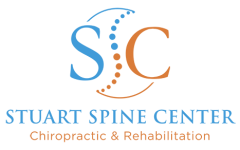Though tennis and golf can be great exercise and fun recreational activities, they can also present risks for potential injuries. Tennis elbow and golfer’s elbow are often experienced by those who play the sports and sometimes not from the sports. Mechanics, plumbers and carpenters often report these injuries that cause microscopic tears in the tissues, inflammation and swelling or pain around the elbow. Overuse, repetitive movements, improper lifting, throwing or hitting, insufficient warm up or poor conditioning can cause tennis elbow and golfer’s elbow. Many times, these two disorders can be confused with each other and both are very uncomfortable. The major difference between the two is where the elbow is inflamed. How to treat tennis elbow and golf elbow will depend on the severity of the condition. Most of the time, full strength and range of motion can be regained with proper treatment, with Chiropractic and Physical therapy being highly successful in treating the pain associated with Tennis/Golf Elbow.

Lateral epicondylitis, better known as tennis elbow, is an overuse injury most commonly found in adults aged 30-50. This muscle strain causes inflammation outside of the elbow and forearm. These muscles become inflamed by being overworked or through repeated use. Activities such as raking, gardening and cutting wood can cause tennis elbow as well. Tendons in the elbow and forearm are anchor muscles to bones to extend and stabilize the wrist. When the attachment is weakened, pain and tenderness arise when performing activities including gripping, grasping or lifting. Symptoms of tennis elbow usually include difficulty grasping or lifting things, weak grip strength, pain when using the wrist, numbness or tingling in the fingers and dull ache at resting. The dominant arm is most likely to experience tennis elbow but can be developed in both arms. Tennis elbow is usually degenerative but if left untreated, it can advance to where it becomes difficult to turn a doorknob, brushing your teeth or holding a cup.



4401 SE Federal Highway,
Suite 104
Stuart, FL 34997
StuartSpineCenter@gmail.com
Monday (8:00 AM - 6:00 PM) Tuesday (8:00 AM -6:00 PM) Thursday (8:00 AM - 6:00 PM)
772-286-1720
© 2020 All rights reserved